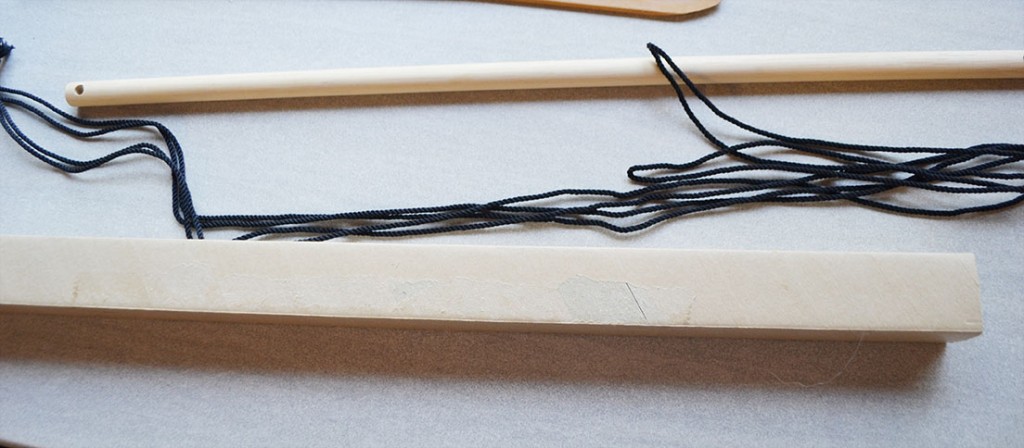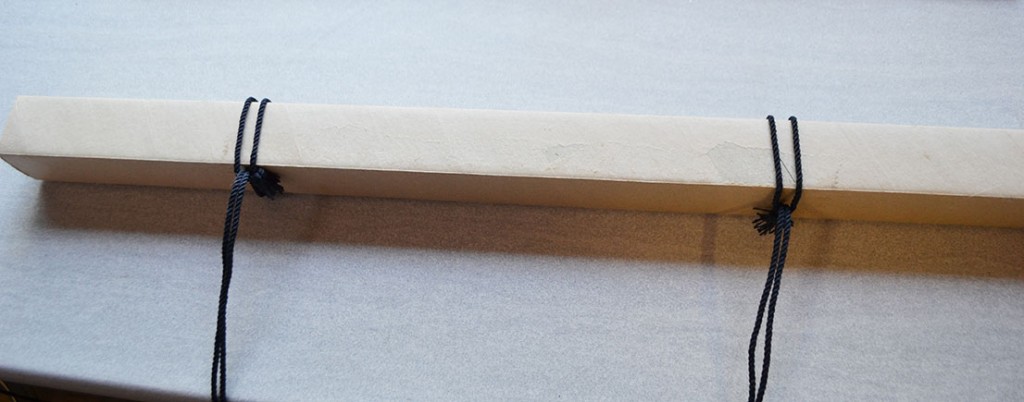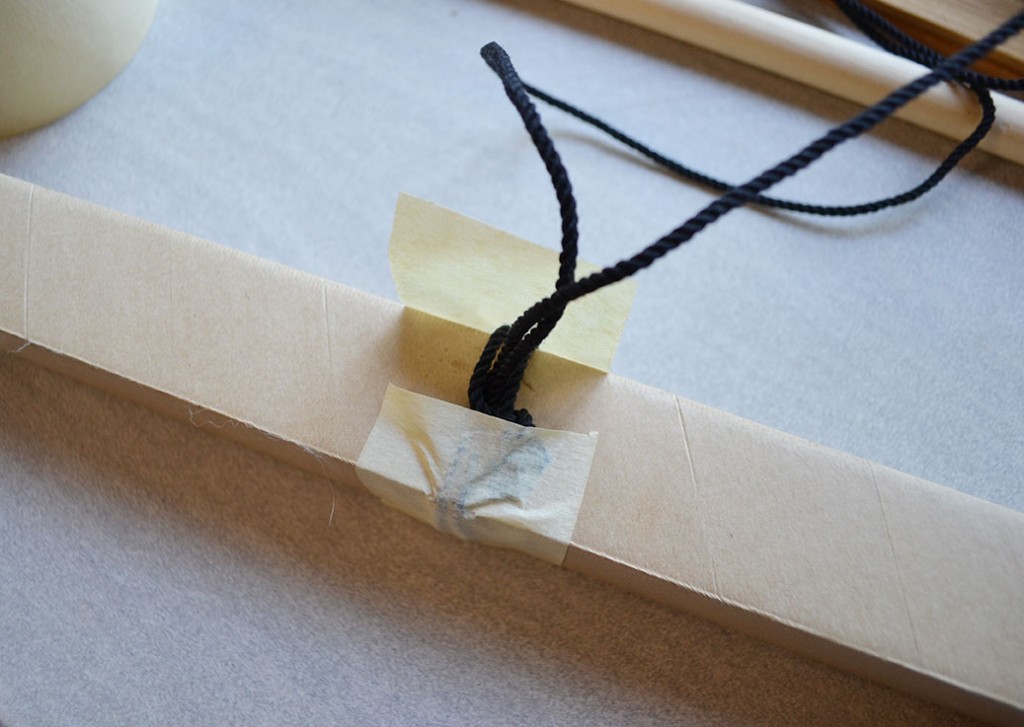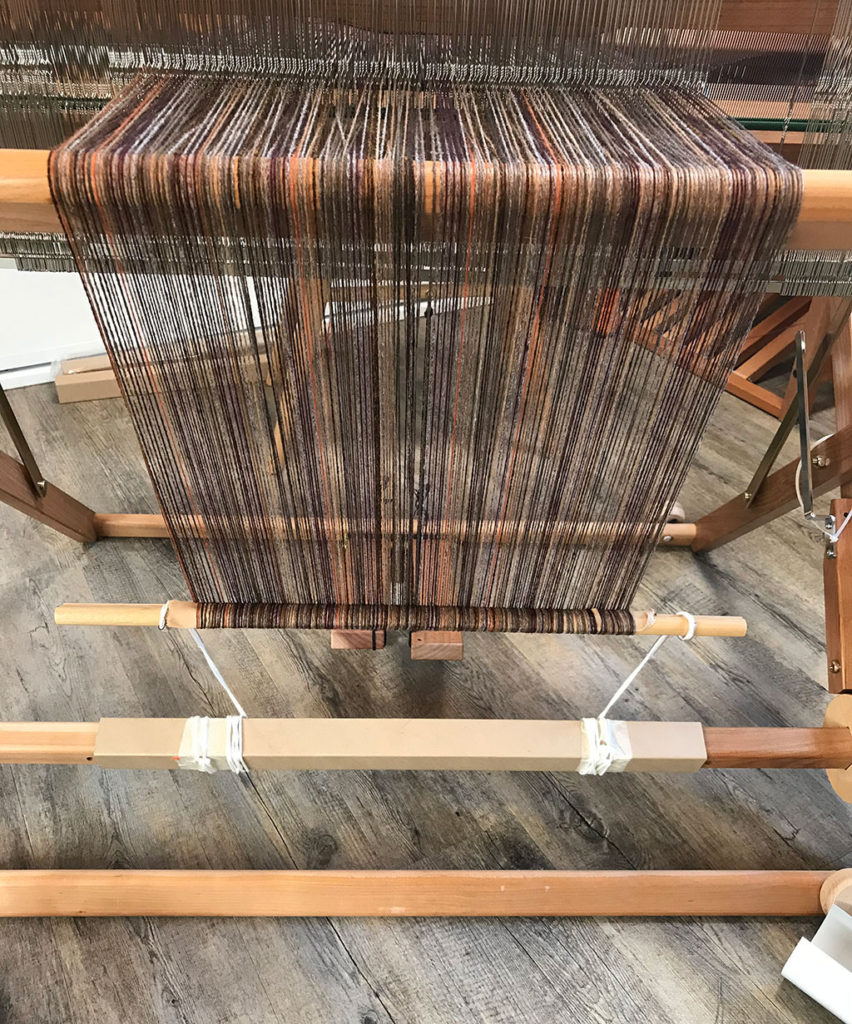When you weave with a pre-wound warp, especially the first time, you will come to the end and see the warp threads taped to the cardboard tube and unable to weave any further.
To get the most out of the warp with minimal waste you can extend it. This is done by releasing the ends from the tape, removing the cardboard tube and attaching the back tie rod and cords to the holes in the warp beam. Attach the cords to the warp beam and back tie rod with a larks head knot. Then tie the ends in approx. 3 cm bouts to the back tie rod. Make sure the cords are winding to the inside of the loom. Check the tension is even and adjust the knots until it is.
A warp extension tube
This same method can be used by making a warp extension tube (See p 64, Saori Self-Innovation Through Free Weaving book). This is a convenient way to extend the warp and it can be used for winding on your own warp. I have shown the warp tied to the back tie rod but you can also use another clipping rod.
Step 1: You will need a cardboard tube, 2 tie cords and a back tie rod.
 Step 2: Tie both of the tie cords to the cardboard tube with a larks head.
Step 2: Tie both of the tie cords to the cardboard tube with a larks head.
Step 3: Both cords are attached to the cardboard tube.
Step 4: Secure by taping the cords at the knots to the cardboard tube.
Step 5: Attach the other ends of both of the tie cords to the tie rod with a larks head.
Step 6: Place the completed extension tube on the warp beam of the loom. NOTE: Make sure the cords will be winding to the inside of the loom – this makes the warp brake and release work while you are weaving.
Step 7: Taking the threads off the tape as you knot each bout to the back tie rod is good practice.
Step 8: Tie the ends of the warp onto the tie rod in 2-3cm bouts using a square knot. Make sure tension is even and adjust knots until it is. Make sure the warp and tie cords are winding to the INSIDE of the loom.
Step 9: Alternatively, you can also use another clipping rod to slot the taped paper directly into the slot which saves tying the knots onto the rod.








